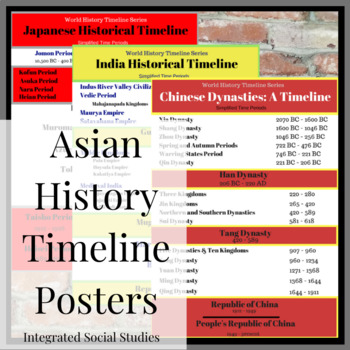

Though they have a less direct impact on the world today, these historic cultures held major influence over the course of history.

These factors arise at different times in different places, and are not universal metrics of "progress." For simplicity's sake, the editors have marked the break with the industrialization of the United Kingdom and the United States.Beginning with the Earth's formation, through to the beginning of the modern day, fan favorites like ancient Egypt, ancient Greece, ancient in Mesopotamia, Harappa, the Roman Empire, and Aksum make their debuts. The division between early modernity and late modernity is also relatively fuzzy, as it's most commonly decided based on industrialization and complex modes of production. Medieval societies were built around systems of government, economic practices, and schools of thought that are often completely alien to today's readers, while by the Renaissance things like standing armies, stock-bond companies, and ethnic states come into play.ģ. With the Italian Renaissance, things start to look more familiar than in the Middle Ages. The editors at Infoplease have decided to split the divide around the beginning of the Italian Renaissance. Ultimately the distinction between modern and pre-modern is fairly arbitrary, especially when applied to places outside of Europe.Ģ. The most common dispute about when "modern" history begins is whether it starts right before or right after the Middle Ages (being named as such because they fall between Classical history and Modern history).

The distinction between modern and pre-modern is a bit shaky at times. Being the present, it's impossible to say when or how this time period may end. The contemporary period is characterized by the end of colonial imperialism, the rise of globalization and neocolonialism, the Cold War, and the rapid growth of global communication. These two new technologies more than anything else will fundamentally shape the course of human affairs. By the end of this time period, the multinational empires of the past will begin to break apart, paving the way for the current nations of the world.Ĭontemporary history begins with the splitting of the atom and the rise of computers in the 20th century into the 21st century. The late modern period is characterized by industry, locomotion, the peak of colonialism and imperialism in Africa and Asia, and the beginnings of industrialized warfare. Late modernity, if it can be meaningfully distinguished from the present day, begins in the 19th century and ends with World War II and the beginning of the atomic era. Explore some of the highlights from this defining period of human history, including the American Revolution and the French Revolution. Across the entire world, from Mali to the Maratha, this time period will see the consolidation and rise of thousands of notable polities and countries. Early modernity will see the creation of the nation-state, the rise of capitalism and colonialism, and the beginnings of industrialization. With the "rediscovery" of Classical learning in the West, the invention of new economic models like mercantilism, and increased contact around the globe, the world begins to take the shape it has today. Check out our timelines to discover more about these remote (and often unrecognizable) times.ġ200?1299 (A.D.) World History Early Modern 2 History The inventions of agriculture, fire, megalithic construction, and speech are the foundations of human life, as well as the development of the arts and sciences. Beginning with the Earth's formation, through to the beginning of the modern day, fan favorites like ancient Egypt, ancient Greece, ancient in Mesopotamia, Harappa, the Roman Empire, and Aksum make their debuts.


 0 kommentar(er)
0 kommentar(er)
